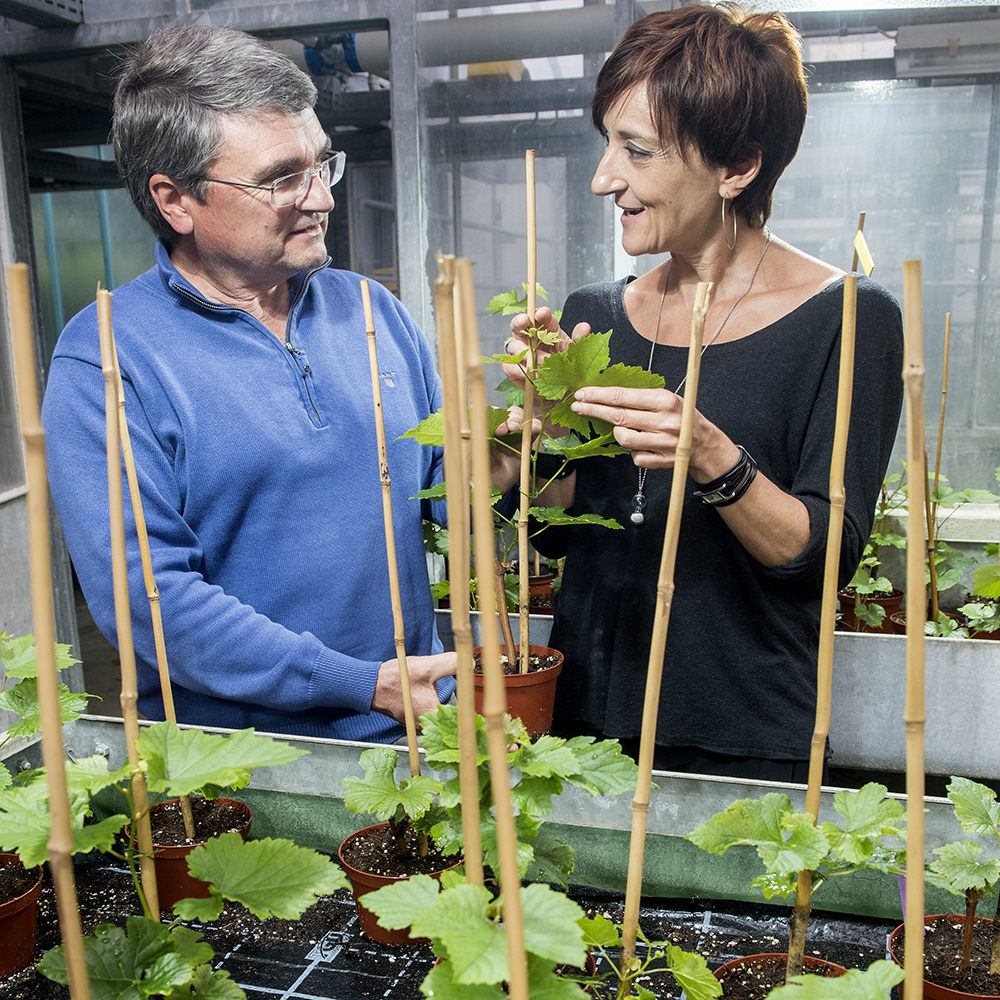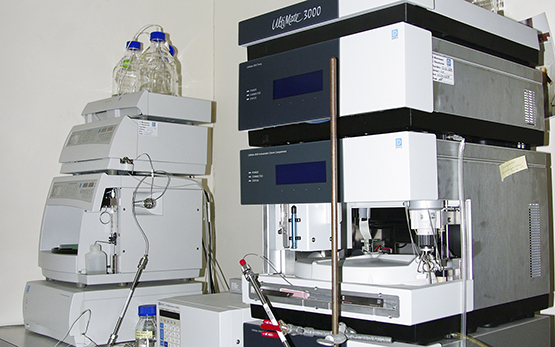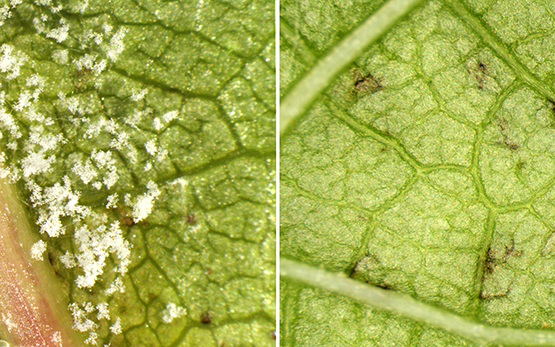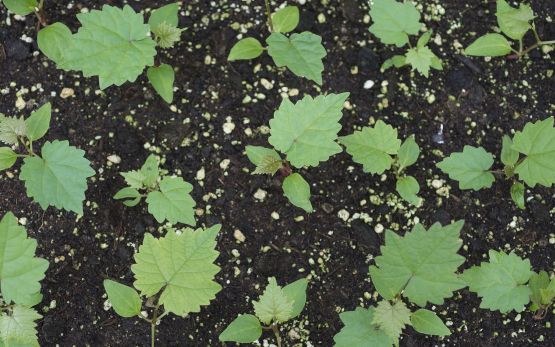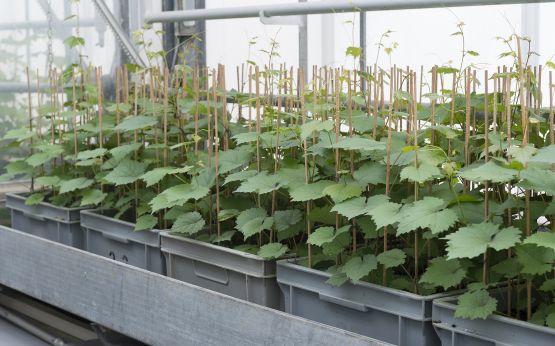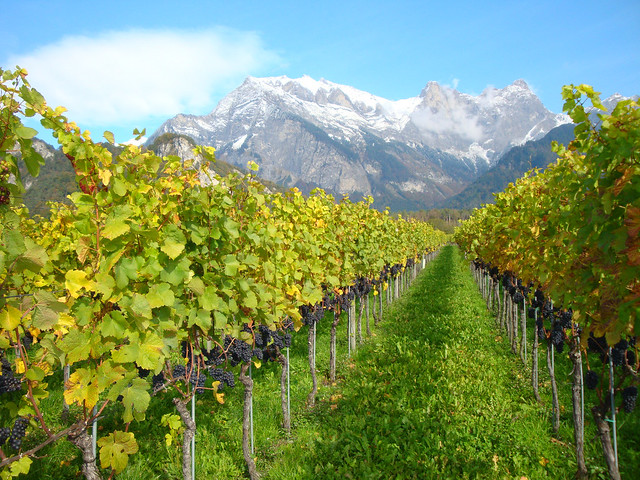For 50 years now, viticulture breeding has been developing new grape varieties with clear-cut plant-protection objectives, making use of the plants’ natural resistances. The marketing of the first grape varieties that allow farmers to dispense totally with fungal treatments is expected in eight to ten years’ time.
To this day, over 95% of Swiss vineyards consist of European grape varieties (Vitis vinifera), which are susceptible to both downy and powdery mildew. As a rule, they require from six to ten phytosanitary treatments to guarantee a high-quality harvest, whether they are grown according to integrated or organic production methods. Developing grape varieties with a natural resistance to the main fungal diseases offers the greatest potential for reducing the use of phytosanitary inputs. In particular, by incorporating new technologies, the breeding process allows us to obtain grape varieties with a high level of resistance, and currently pursues the aim of ‘zero treatment’.
Stage one: Grape varieties resistant to grey mould
Since 1965, Agroscope has been developing new grape varieties with the aim of creating a high resistance to grey mould (Botrytis cinerea), one of the most virulent pathogens in our vineyards. Eight new grape varieties have thus emerged and been made available to practice since 1990. The best-known varieties are Gamaret, Garanoir, Diolinoir, Carminoir, and Galotta. The high resistance of these varieties to grape rot allows growers to dispense with the application of specific anti-botrytis fungicides, the preparations most likely to leave residues in wine. What’s more, their high winemaking potential and their adaptive phenotypic plasticity explain their rapid growth in Swiss vineyards. In 2016, there were nearly 900 ha planted with these varietals, i.e. nearly 10% of Switzerland’s range of red varieties. Gamaret thus became the fourth most important red grape variety, and was recently included in the French catalogue.
Divico and Co.: Resistant to downy and powdery mildew
Since 1996, Agroscope has been creating grape varieties that are also resistant to downy mildew (Plasmopara viticola) and powdery mildew (Erysiphe necator). In a first stage, the Gamaret grape, a European parent variety that is extremely resistant to grey mould, was crossed with a wide range of grape varieties carrying resistance genes from wild American and Asian vines.
In order to speed up the breeding process and render it more reliable, Agroscope’s Mycology Research Group has developed a scientific methodology that includes early testing to select the candidates with a high resistance to downy mildew. Biochemical criteria have been developed on the basis of natural defence mechanisms induced by the vine (stilbene phytoalexins). The synthesis of stilbenes, and more specifically of resveratrol and its oxidised derivatives such as ε- and δ-Viniferin, as well as pterostilbene (a methylated derivative) is one of the most effective defence mechanisms of the vine against fungal pathogens. Following an infection, resistant grape varieties are capable of synthesising these toxic derivatives and preventing the growth of the pathogen. This approach allowed a first highly resistant red grape variety, Divico, to be marketed in 2013. Divico can be successfully cultivated with a maximum of one to three treatments, depending on disease pressure, using products authorised in organic viticulture. Its high quality potential is sparking considerable interest in the sector, with 22 ha already in production in Switzerland in 2016. A second (white) variety with the same resistance traits will be available from 2019.
Target zero treatment: A Franco-Swiss project
Since 2009, Agroscope has collaborated on a joint project with the Colmar Inra Research Centre for breeding resistant grape varieties through the pyramidisation of downy-mildew and powdery-mildew resistance genes. This method enables the accumulation of several resistance genes in order to obtain grape varieties with a virtually absolute and stable resistance. Resistance genes from Agroscope lines deriving from wild American (Vitis rupestris and aestivalis) and Asian (Vitis amurensis) species are accumulated by crossing with resistance genes from French lines stemming from the American species Vitis rotundifolia. Their joint presence in the crossings is checked by genotyping. Three populations comprising 400 candidates possessing a minimum of two resistance genes against downy and powdery mildew, respectively, are examined on the Agroscope experimental field in Pully and the Inra experimental field in Colmar as to their agronomic and oenological suitability. An initial selection of fifteen or so particularly promising candidates will be tested for certification in France and Switzerland in 2018. The launch of these first grape varieties which will render fungal treatments completely unnecessary is expected eight to ten years from now.


